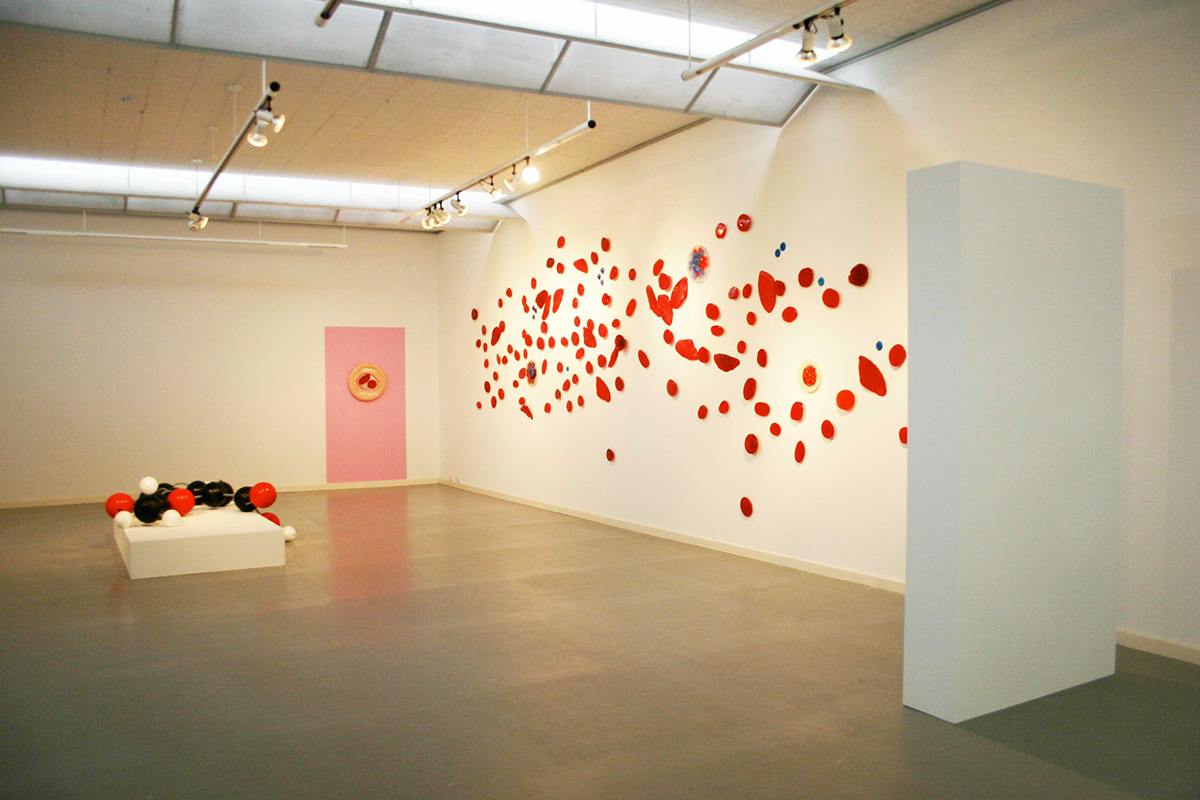Sickle Cell : Scott Campbell
The installation of a blood-borne disease, Switchback Gallery, Monash University, Churchill
Photos: Angela Bailey
Materials: Thermoplastic resin, latex, plaster, paint, buoys, tubing





The installation of a blood-borne disease, Gertrude Contemporary Art Spaces, Melbourne.
An exhibition of the Midsumma Festival.
Photos Angela Bailey
Strange benevolence
Sickle cell anaemia is a strangely benevolent disease.
The genetically acquired blood disorder offers its victims
protection from malaria while blocking capillaries and
starving the body of blood. Its concentration in certain
populations is thought to be the result of this contradictory
prognosis; where malaria outbreaks have been severe,
the proportion of carriers of sickle cell anaemia has
increased. This benevolence is the subject of Scott
Campbell's installation.
On the walls of the gallery haemoglobin, 'sickled' red
blood cells and white blood cells cluster as they might
under a microscope slide. In the space a chemical
compound is replicated; a ball-and-stick model of a
drug one might take to thin the blood. These are
enormous. In the gallery, things we do not normally
see dwarf us. We are nanobots on an incredible journey.
The blood products are lustrous, shapely and alluring —
the translucent red of attraction, passion and danger.
They congregate and cluster in appealing configurations.
The rigid structure of the ball-and-stick model is evident
by comparison. As we stand in the gallery, between
drug and disease, are we attracted to that order?
Or do we gravitate toward the disorder of the natural
processes, which offer both beauty and danger; the
attraction-repulsion of viscous, red blood — of life itself —
which we know only because we know death?
The 'terrible beauty' of disease processes has been an
enduring theme in Campbell's work. Where earlier works
have relied on found objects, the moulded resin used in
this installation is imprinted with their memory; the moulds
have been shaped from ocean refuse. And though the
mould is a technology for mass production, the human
activity involved in mixing chemicals and finishing the
'blood products' by hand, ensures that, as in nature, no
two are the same. As we bring our own histories and
preoccupations to the viewing of this work, it is likely
that our responses will be similarly diverse.
Chris Dew
History Program
La Trobe University
Exhibition catalogue essay.


Installation catalogue essay.
6 page, A6, roll fold, cmyk and machine varnish onto card.

